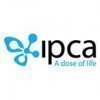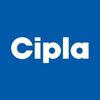Quality Control Officer
200+ Quality Control Officer Interview Questions and Answers

Asked in Aurobindo Pharma

Q. Wt is pharmacy? Which type of chemicals we are used in pharmaceutical company?
Pharmacy is the science and technique of preparing, dispensing, and reviewing drugs and providing additional clinical services.
Pharmacy involves the preparation and dispensing of drugs
Pharmaceutical companies use various types of chemicals such as active pharmaceutical ingredients (APIs), excipients, and solvents
APIs are the main active ingredients in a drug that provide the therapeutic effect
Excipients are inactive substances that help deliver the drug to the body
Solvents ar...read more

Asked in Aurobindo Pharma

Q. Wt is ph ? Wt is quality control and wt is quality assurance?
pH is a measure of acidity or alkalinity. Quality control ensures products meet standards. Quality assurance ensures processes meet standards.
pH is a measure of the concentration of hydrogen ions in a solution, indicating its acidity or alkalinity
Quality control involves inspecting and testing products to ensure they meet predetermined standards
Quality assurance focuses on ensuring that processes and procedures are in place to consistently produce products that meet quality s...read more
Quality Control Officer Interview Questions and Answers for Freshers

Asked in Lupin

Q. Which type of stationary phase is used in HPLC?
The stationary phase used in HPLC can be either polar or non-polar.
Polar stationary phases are used for separating polar compounds, while non-polar stationary phases are used for separating non-polar compounds.
Common polar stationary phases include silica gel and alumina, while common non-polar stationary phases include C18 and C8.
The choice of stationary phase depends on the properties of the sample being analyzed and the desired separation.
The stationary phase is typically ...read more

Asked in Aurobindo Pharma

Q. What is therapeutic effect? And what is the abbreviation of GDP?
Therapeutic effect refers to the positive impact of a medical treatment on a patient's health. GDP stands for Good Distribution Practice.
Therapeutic effect is the desired outcome of a medical treatment
It can be measured by improvements in symptoms or overall health
For example, the therapeutic effect of an antibiotic is the elimination of an infection
GDP is a set of guidelines for ensuring the quality and safety of pharmaceutical products during distribution
It includes require...read more

Asked in Aurobindo Pharma

Q. What types of chemicals are used in standardized tests?
The type of chemical used in standardized test depends on the test being conducted.
Different tests require different chemicals for accuracy and reliability.
Chemicals used in standardized tests are often highly purified and standardized themselves.
Examples of chemicals used in standardized tests include reagents like Benedict's solution and litmus paper.
Other chemicals used in standardized tests include acids, bases, and indicators.
The choice of chemical depends on the nature ...read more

Asked in Aurobindo Pharma

Q. What is assay? Why we do assay in pharmaceutical industry?
Assay is a test to determine the potency or purity of a drug or substance.
Assay is done to ensure that the drug or substance meets the required standards.
It helps in determining the concentration of the active ingredient in a drug.
Assay can also be used to detect impurities or contaminants in a drug.
It is an important part of quality control in the pharmaceutical industry.
Examples of assays include HPLC, GC, and spectrophotometry.
Quality Control Officer Jobs




Asked in Aurobindo Pharma

Q. What is semipermeable membrane? And which type of parts we can see in this ?
Semipermeable membrane is a type of membrane that allows certain molecules to pass through while blocking others.
It is a thin layer of material that selectively allows certain molecules to pass through
Examples include cell membranes and dialysis tubing
The membrane is made up of tiny pores or channels that allow small molecules to pass through
It is used in various applications such as water filtration and drug delivery systems

Asked in Britannia

Q. Which is the problem observed during manufacturing of baking goods and What is the solution on this problems?
One common problem observed during manufacturing of baking goods is inconsistent product quality.
Inconsistent product quality can occur due to variations in ingredient measurements, mixing techniques, or oven temperatures.
For example, if the amount of baking powder used in a recipe is not accurately measured, it can result in uneven rising of the baked goods.
Similarly, if the mixing technique is not uniform, some portions of the product may be under-mixed or over-mixed, leadi...read more
Share interview questions and help millions of jobseekers 🌟


Asked in Lupin

Q. Which instruments have you handled?
I have handled various instruments including calipers, micrometers, gauges, and spectrophotometers.
Calipers for measuring distance between two opposite sides of an object
Micrometers for measuring small distances with high precision
Gauges for measuring various parameters such as pressure, temperature, and humidity
Spectrophotometers for measuring the intensity of light in a spectrum
Also familiar with pH meters, balances, and pipettes
Regularly trained on new instruments and thei...read more

Asked in Aurobindo Pharma

Q. What are high permeability and low permeability membranes?
High and low permeability membranes are used in filtration processes to control the flow of substances.
High permeability membranes allow for a greater flow of substances through the membrane.
Low permeability membranes restrict the flow of substances through the membrane.
Permeability is determined by the size of the pores in the membrane.
Examples of high permeability membranes include ultrafiltration membranes used in water treatment.
Examples of low permeability membranes incl...read more

Asked in Lupin

Q. What is the difference between a swab sample and a rinse sample?
A swab sample involves using a swab to collect a sample from a specific area, while a rinse sample involves rinsing a larger area to collect a sample.
Swab sample: Collects a sample from a specific area using a swab.
Rinse sample: Involves rinsing a larger area to collect a sample.
Swab samples are commonly used for surface testing, such as swabbing a countertop or equipment.
Rinse samples are often used for environmental testing, such as rinsing a large area of a production floo...read more
Asked in Leben Laboratories

Q. If one tablet of paracetamol 500 mg API is needed, how many grams or kilograms of API are needed to manufacture 1 million tablets?
To manufacture 10 lakh tablets of paracetamol 500 mg API, you would need a certain amount of grams or kilograms of API.
To find the amount of API needed, we need to calculate the total quantity required for 10 lakh tablets.
First, convert 10 lakh tablets to the number of milligrams (mg) by multiplying by 500 mg (the dosage of each tablet).
Then, convert the total milligrams to grams or kilograms by dividing by 1000.
The resulting value will be the amount of API needed to manufact...read more

Asked in Aurobindo Pharma

Q. What is tablet? How many dosage forms are there ?
Tablet is a solid dosage form of medication. There are several types of dosage forms available.
Tablet is a compressed solid form of medication.
It is one of the most commonly used dosage forms.
Other dosage forms include capsules, injections, syrups, etc.
Tablets can be coated or uncoated, immediate or extended release.
Examples of tablets include aspirin, paracetamol, and ibuprofen.
Asked in Agravan Heritage University

Q. What are acids and bases?
Acidic substances have a pH less than 7, while basic substances have a pH greater than 7.
Acids release hydrogen ions (H+) when dissolved in water.
Bases release hydroxide ions (OH-) when dissolved in water.
Examples of acids include vinegar, lemon juice, and battery acid.
Examples of bases include baking soda, bleach, and ammonia.

Asked in Tata Steel

Q. What is the chemical composition of iron ore?
The chemical composition of iron ore varies depending on the type of ore and its source.
Iron ore is primarily composed of iron oxides, such as hematite and magnetite.
Other elements present in iron ore include silica, alumina, phosphorus, sulfur, and trace amounts of various metals.
The specific chemical composition of iron ore can vary widely, even within the same deposit or mine.
For example, a typical chemical composition of iron ore may include around 60-70% iron, 2-6% silic...read more

Asked in Aurobindo Pharma

Q. What color are we seeing in the test solution?
The color seen in the test solution depends on the type of test being conducted.
The color change indicates the presence or absence of a particular substance in the solution.
Different tests use different indicators to produce a color change.
For example, a pH test may use litmus paper to indicate acidity or alkalinity.
A glucose test may use a reagent that changes color in the presence of glucose.
The color seen in the test solution can be compared to a color chart to determine t...read more

Asked in Aurobindo Pharma

Q. What is physical compatability and what is chemical compatability?
Physical compatibility refers to the ability of two substances to be mixed or combined without any physical changes. Chemical compatibility refers to the ability of two substances to be mixed or combined without any chemical reactions.
Physical compatibility is about the physical properties of substances, such as solubility, viscosity, and stability.
Chemical compatibility is about the chemical properties of substances, such as reactivity, acidity, and compatibility with other ...read more

Asked in Aurobindo Pharma

Q. What is osmosis and what is osmotic pressure?
Osmosis is the movement of solvent molecules from a region of low solute concentration to a region of high solute concentration through a semi-permeable membrane. Osmotic pressure is the pressure required to prevent the movement of solvent molecules through the membrane.
Osmosis is a type of passive transport.
It occurs in living cells and is important for maintaining cell shape and function.
Osmotic pressure is influenced by the concentration of solutes on either side of the me...read more

Asked in Aurobindo Pharma

Q. What is distillation? And what is dilution?
Distillation is a process of separating components of a mixture based on their boiling points. Dilution is the process of reducing the concentration of a solution by adding more solvent.
Distillation involves heating a mixture to vaporize the component with the lowest boiling point, then condensing the vapor to collect the purified component.
Dilution is commonly used in chemistry to prepare solutions of a desired concentration.
Distillation and dilution are both important techn...read more
Asked in Leben Laboratories

Q. What is the difference between qualitative and quantitative analysis?
Qualitative analysis is subjective and deals with non-numerical data while quantitative analysis is objective and deals with numerical data.
Qualitative analysis deals with non-numerical data while quantitative analysis deals with numerical data.
Qualitative analysis is subjective while quantitative analysis is objective.
Qualitative analysis is used to gain insights and understanding while quantitative analysis is used to measure and quantify.
Examples of qualitative analysis in...read more

Asked in Lupin

Q. What is the principle of HPLC?
HPLC stands for High Performance Liquid Chromatography. It is a technique used to separate, identify, and quantify components in a mixture.
HPLC works on the principle of separation of components based on their interaction with the stationary phase and mobile phase.
The stationary phase is a solid or liquid material that is packed into a column, while the mobile phase is a liquid that flows through the column.
The sample is injected into the mobile phase and as it flows through ...read more

Asked in Aurobindo Pharma

Q. How many compatibilities are there in the pharmaceutical industry?
There are numerous compatibilities in pharmaceutical industry depending on the type of drug, dosage form, and excipients used.
Drug-excipient compatibility
Drug-dosage form compatibility
Excipient-excipient compatibility
Container-drug compatibility
Drug-stability compatibility

Asked in Lupin

Q. What are the criteria for Uniformity of Dosage Unit?
Criteria for Uniformity of Dosage Unit
Uniformity of weight and drug content in each dosage unit
Acceptable range of variation in weight and drug content
Ensuring consistent potency and efficacy of the drug
Testing methods include weight variation test and content uniformity test
Criteria varies depending on the type of drug and dosage form
Asked in Leben Laboratories

Q. What is the role of the quality control department in the pharmaceutical industry?
The quality control department ensures that pharmaceutical products meet the required standards and regulations.
Ensuring compliance with regulatory requirements
Testing and analyzing raw materials, in-process samples, and finished products
Identifying and resolving quality issues
Maintaining documentation and records
Conducting audits and inspections
Collaborating with other departments to improve quality and efficiency
Asked in Veko Care

Q. What is pH? What is environmental monitoring in microbiology
pH is a measure of acidity or alkalinity of a solution. Environmental monitoring in microbiology is the process of monitoring the microbial contamination in the environment.
pH is measured on a scale of 0-14, with 7 being neutral, below 7 acidic and above 7 alkaline
Environmental monitoring in microbiology involves sampling and testing of air, water, surfaces, and personnel for microbial contamination
The purpose of environmental monitoring is to identify potential sources of co...read more

Asked in Tata Steel

Q. What are the material safety protocols in your working area?
The material safety in my working area is ensured through strict adherence to safety protocols and regular inspections.
Strict adherence to safety protocols
Regular inspections to identify and address any potential hazards
Proper storage and handling of materials
Use of personal protective equipment (PPE)
Training and awareness programs for employees

Asked in Foxit

Q. What is the difference between QA and QC?
QA focuses on preventing defects, while QC focuses on identifying and fixing defects.
QA stands for Quality Assurance and is a proactive process that focuses on preventing defects in products or services.
QC stands for Quality Control and is a reactive process that focuses on identifying and fixing defects in products or services.
QA involves establishing processes, standards, and guidelines to ensure quality throughout the development or production process.
QC involves conductin...read more

Asked in Lupin

Q. Tell me about Dissolution Criteria.
Dissolution criteria refers to the amount of drug substance that should dissolve in a specified time period.
It is a measure of drug release from a dosage form.
It is important for ensuring the drug is being absorbed properly.
The criteria varies depending on the type of drug and dosage form.
For example, immediate-release tablets should dissolve at least 80% in 30 minutes.
Slow-release tablets may have a longer dissolution time.

Asked in Aurobindo Pharma

Q. saliva pH range ? And also water pH range?
Saliva pH range is typically between 6.2 and 7.6, while water pH range is generally between 6.5 and 8.5.
Saliva pH range: 6.2 - 7.6
Water pH range: 6.5 - 8.5

Asked in Lupin

Q. Which test have you performed most frequently?
I have performed the microbiological test the most.
Microbiological test is crucial in ensuring the safety and quality of products.
Examples include testing for microbial contamination in food and pharmaceutical products.
I have performed this test numerous times in my previous roles as a Quality Control Officer.
Interview Questions of Similar Designations
Interview Experiences of Popular Companies








Reviews
Interviews
Salaries
Users

















